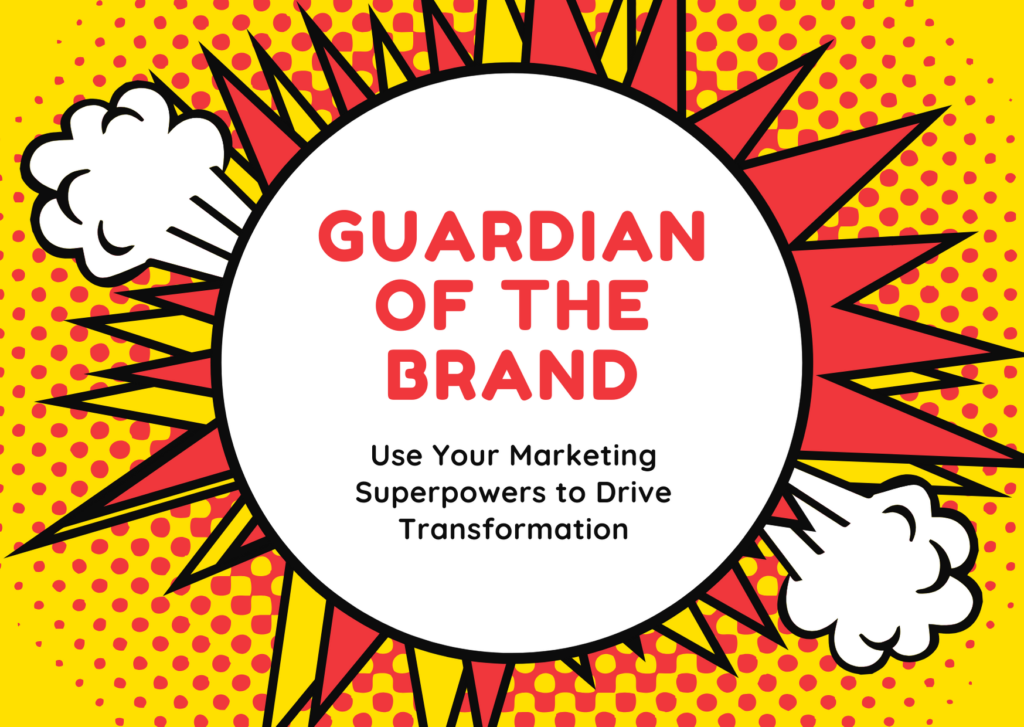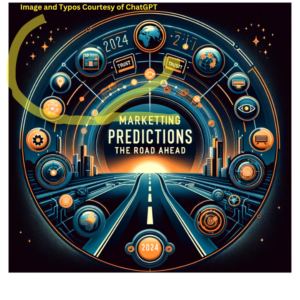You may be wondering, “why is a marketing and product management guy writing about cloud infrastructure providers? And why should I care?” This article gets into some technical detail, but hang in there. You’ll be better off for it.
Let’s start with some context.
Cloud technologies and Infrastructure as a Service (IaaS), in particular, are helping fuel the digital transformation that is so critical for many companies to effectively compete. They are enabling us to go-to-market faster, be more agile in meeting customer needs, reduce costs and much more.
More about IaaS later. The big point is that, increasingly, it is digitally savvy marketing leaders who are driving business transformation. Consider Beth Comstock, who became Vice Chair of GE after leading digital efforts at NBC, one of their flagship businesses, and serving as CMO of GE. In order for marketing leaders to drive deep lasting change like Comstock, we need to know how technology can advance the bigger vision and shape the customer experience.
To do it well, we need to stay technologically literate and collaborate with our IT colleagues, partners and customers.
Ultimately, marketing leaders are Guardians of the Brand. Marketing leaders must focus on the voice of the customer, develop contingency plans, and help shape the products and customer experiences that affect their brands. This means being an active stakeholder in technology decisions that affect those areas. The lines between marketing, product management and customer experience are indeed blurring.

CMOs need to know about technology initiatives and other dependencies that:
- Influence our company’s ability to meet customers changing needs with agility
- Ensure our products fit seamless with our customers’ workflows
- Enable our companies, products and brands to be part of a bigger ecosystem
Let’s take marketing at Software-as-a Service companies (SaaS), for example. SaaS marketing leaders should drive or at least be involved in initiatives such as customer on-boarding, customer feedback loops, product virality and levers that influence customer retention. It means rolling up your sleeves, diving into product requirements and, depending on your company, often working directly with engineers on customer-centric solutions.
So why should Marketing Leaders care about (Infrastructure as a Service) IaaS?
First, IaaS isn’t the only technology marketers should care about. Quite the opposite. It just happens to be the focus of this article since the connection between IaaS and Marketers is not obvious.
Let’s start by defining IaaS. At a basic level, IaaS enables companies to quickly scale tech infrastructure up and down with demand, so you pay only for what you use. It helps you avoid the expense and complexity of buying and managing your own physical servers and other datacenter infrastructure.
What are the pros and cons of AWS, Azure, Oracle and others? Which provider(s) should be used, and how does that fit with the rest of the IT vision and technology stack?
This sounds like an IT decision. Yes, it is. But senior marketers are stakeholders.
The role of the CIO is changing. According to IDG, 37% of CIOs plan to focus on driving innovation in the next three years. The role is becoming more strategic and less operational, so alignment on vision and collaboration with marketing is critical. For marketing leaders, that means knowing the implications of technologies like IaaS. In international relations, when countries deal with other governments, there’s a philosophy called “trust but verify.” When it comes to big IT decisions, for CMOs and other “non-techie” drivers of transformation, I prefer “trust and stay aligned.”

How can IaaS usage ultimately affect the customer experience and our brands? Let’s consider a few use cases for IaaS.
- Test and development, and faster application development. With IaaS, teams can quickly set up and test and development environments and bring new applications to market faster. When you’re on the hook to launch a new product or digital initiative to meet revenue or other goals, it sure helps to know your company can do that without a snag. Dev/test environments need the ability to scale quickly, and the ability to do that well (and the economics of it) should not present obstacles that affect time to market for launching key initiatives. Again, it is an IT decision but one that has ripple effects on an organization. Just ask a DevOps professional.
- API Management and Integrations. As I’ve written elsewhere, as marketers we want to put our companies at the center of our customers’ universe. Companies like Google and Salesforce have mastered the art of creating entire ecosystems for their communities. APIs are one way to make that happen, since they ensure our tech solutions work seamlessly with our customers solutions, in their workflows. One aspect of IaaS is API management and tools for integration. There’s no shortage of data integration providers (like Zapier at the low-end and Mulesoft and Talend for enterprises). But if data integration is central to a Mission Critical application, is a core part of the technology stack or a big driver of a decision to move away to a siloed legacy system, the strength of an IaaS provider’s native integration capabilities and services can matter.
Ask your technology teams: with either choice, are there potential implications that could affect our ability to develop, deliver and support the kinds of microservices we want to improve our customer experiences or speed to market?
- Big data analysis. Mining massive data sets is now the purview of marketing. We need to find key patterns, spot trends and connect the dots to get customer insights. Personally, I’ve used SaaS solutions to mine large data sets and understand what customers are saying online, what they are searching for etc. But to do this at scale for home-built solutions and your own products requires huge processing power, which IaaS provides economically.
AWS, Azure and other IaaS providers have native AI capabilities. As Azure says, “all it takes is an API call to embed the ability to see, hear, speak, search, understand, and accelerate decision-making into your apps.” AWS also promotes it broad and comprehensive suite of solutions for AI and machine learning. But again, it’s back to the “stakeholder thing” for product managers and marketers. Which IaaS providers have the fastest onboarding for AI and big data analysis? The best training? The largest partner ecosystem and flexibility? The answers could affect your speed to market, your customer experience and your brand. Again, it’s an IT decision, but you are a stakeholder.
- Web apps. IaaS provides the infrastructure to support web apps, including storage, web and application servers, and networking resources. It helps companies quickly deploy web apps and easily scale infrastructure up and down when demand for the apps is unpredictable. When I started Lively, a SaaS solution, we needed a tech infrastructure that could easily scale. When we spoke with FORTUNE 500 companies, scale came up in sales discussions. Customers didn’t care HOW we could scale, just that we could, and we needed to be able to confidently explain it. (After starting out with AWS, we ultimately settled on Heroku and Azure for different aspects of our product).
- Storage, backup, and recovery. IaaS helps companies reduce costs related to data storage, and reduce the complexity of storage management, which is particularly important in highly regulated industries where legal and compliance matter bigtime. Are you a senior exec in marketing, product management or customer experience in Banking? Pharma? Insurance? You’re an IaaS stakeholder. This is not to suggest that a company would NOT be in compliance if they chose AWS over Azure or some other IaaS solution. It just means that if you’re in a position where you’re speaking publicly or to customers you should be informed and speak with confidence knowing about the technology that helps your company manage data and mitigate risks.
Button line, choosing an IaaS provider comes down to:
- Security
- Compliance
- Architecture
- Manageability
- Service levels
- Support
- Cost
Ask your IT colleagues: what are the potential upsides and downsides of IaaS providers?
AWS is the longstanding leader in IaaS, with its extensive data centers and pay-as-you-go model. It also has a comprehensive suite of developer tools, a large ecosystem of developers and strong reputation similar to the silent calling card of IBM in its heyday: “You can’t get fired by using IBM.”
But as with any solution, there are potential downsides of AWS.
- Complicated service implementation. Some AWS services provide advanced capabilities but also require deep expertise for their implementation and support. Also, it requires companies to be well-versed in updates of their services. Sometimes, even for tech-driven companies and partners “keeping up with AWS” can be a challenge, based on CTOs I’ve spoken to. Fortunately, there’s large ecosystem of managed service providers who have deep expertise in AWS technologies. But do you want to go that route and add an extra layer for mission critical applications? Maybe. Maybe not. Something to consider.
- AWS has had a reputation for not cooperating well with open source communities. There are signs of this changing but if you use open source solutions, keep this in mind and ask the right questions.
- Cost. With any solution, the total cost of ownership must be considered. This includes downstream impacts on the organization and intangibles. There are loud whispers in the tech community that for enterprises, AWS may not be as cost efficient as it claims.
Leave Tech to the Tech Professionals but Have a Seat at the Table
If you’re focused on digital and marketing transformation, it helps to be insatiably curious, because the speed of change in recent years has been staggering. We need to continually learn and stay on the cutting edge of technology and instill that curiosity in our teams.
The lines between product management, customer experience and marketing are blurring. Increasingly, companies focused on digital transformation are tapping digitally savvy marketing leaders to drive that change. Again, keep Beth Comstock in mind. In addition to vision and leadership, she was known for staying informed by tapping top subject matter experts. In order to do that well, you need to know the right questions to ask.
10 Key Takeaways for Marketing and Digital Change Makers
Bottom line, when it comes to transformation, IaaS and other technologies it comes down to this:
- If you’re driving digital transformation, have a vision that advances the company’s core strategies, and make sure the executive team is aligned.
- Be the Guardian of your brand.
- Take some ownership for the customer experience. Better yet, shape it.
- Build strong, collaborative relationships with your CIO and CTO
- Leave IT decisions to IT professionals, but make sure you’re at the table for the big ones like IaaS.
- Ask the right questions and tap the knowledge of subject matter experts.
- Make sure that technology decisions fuel and support the bigger vision.
- Be aware of IT decisions that could inadvertently affect the customer experience and the brand.
- Stay technologically literate, insatiably curious and instill that in your teams.
- Rinse and repeat.



